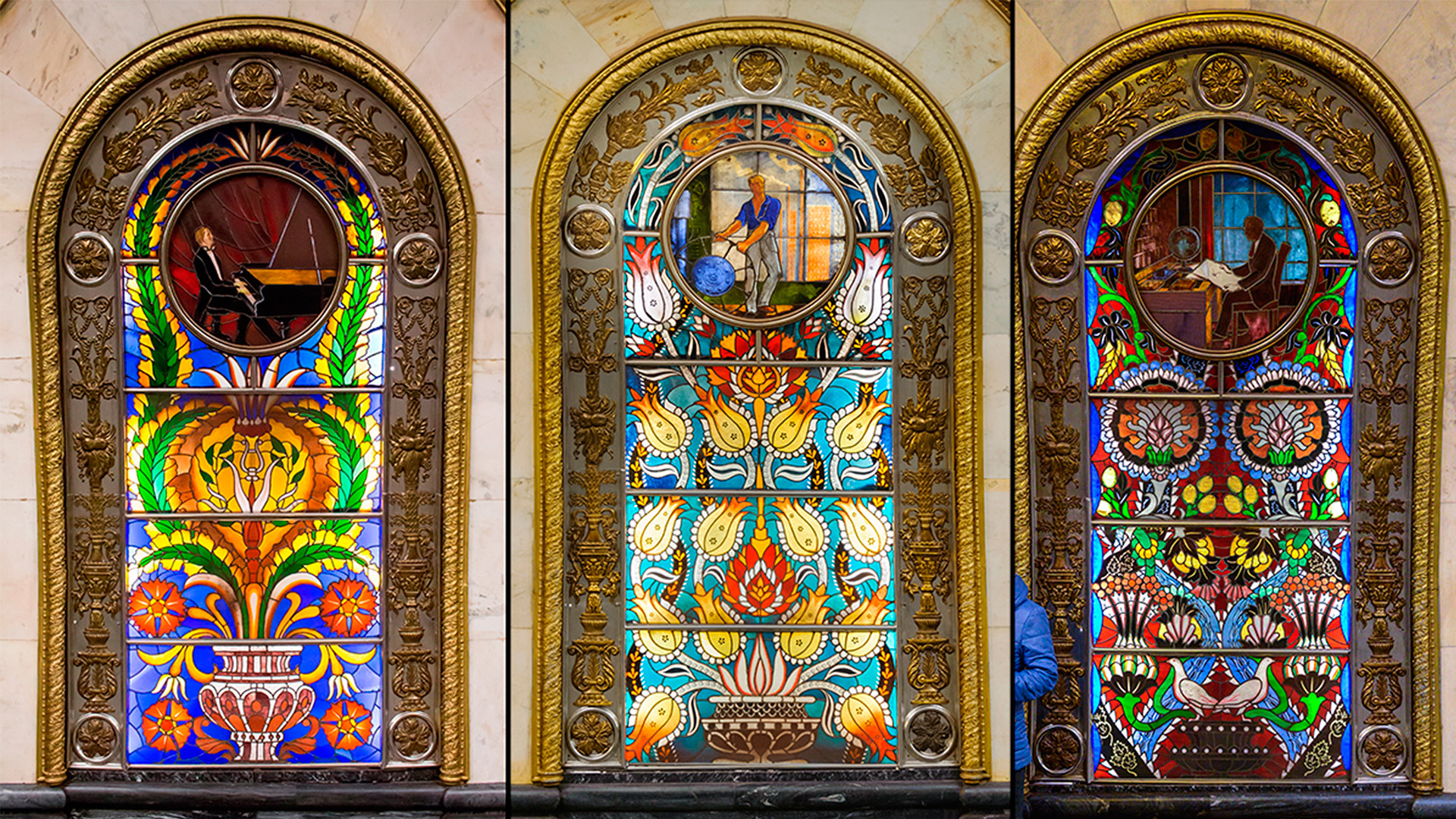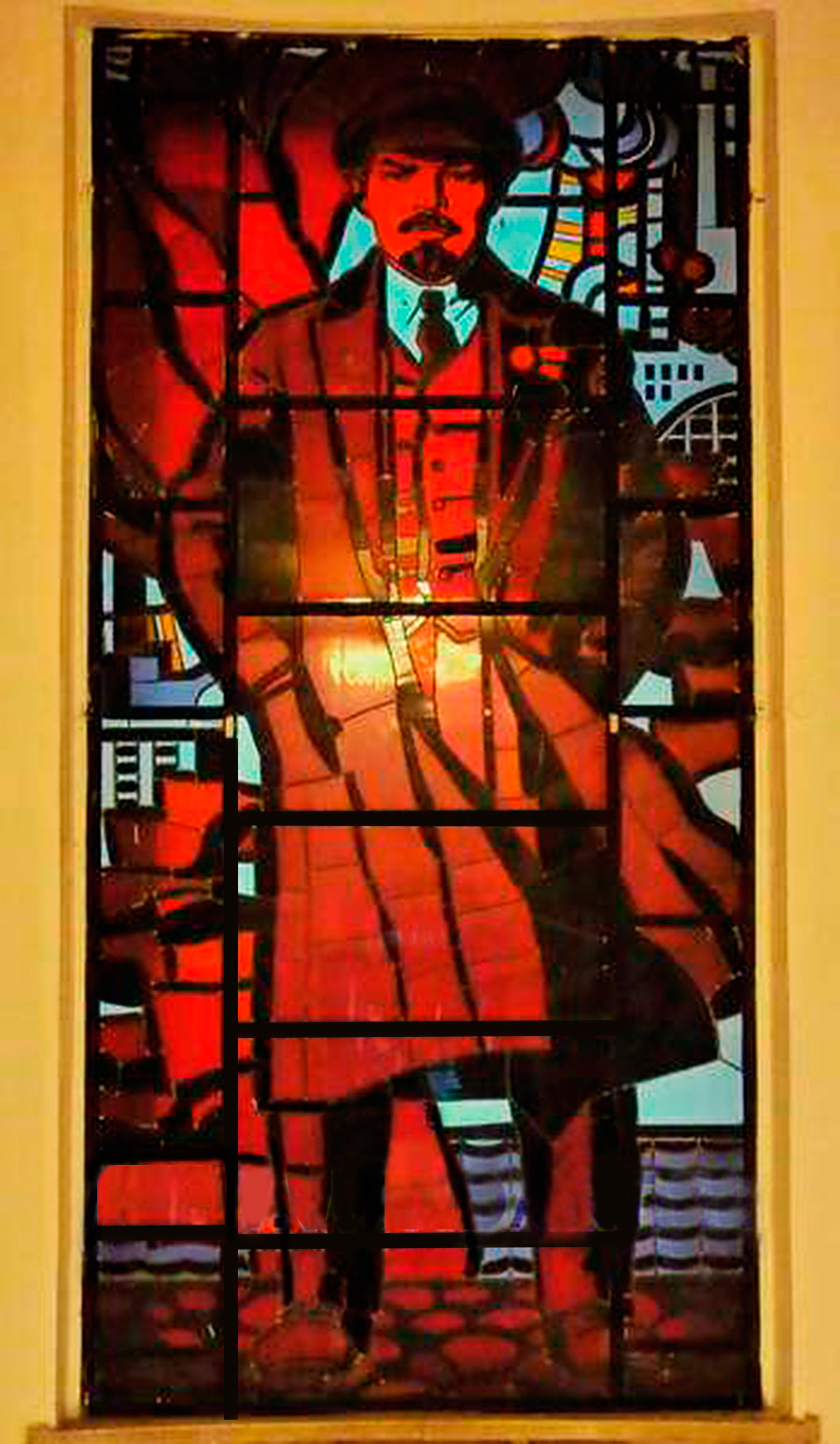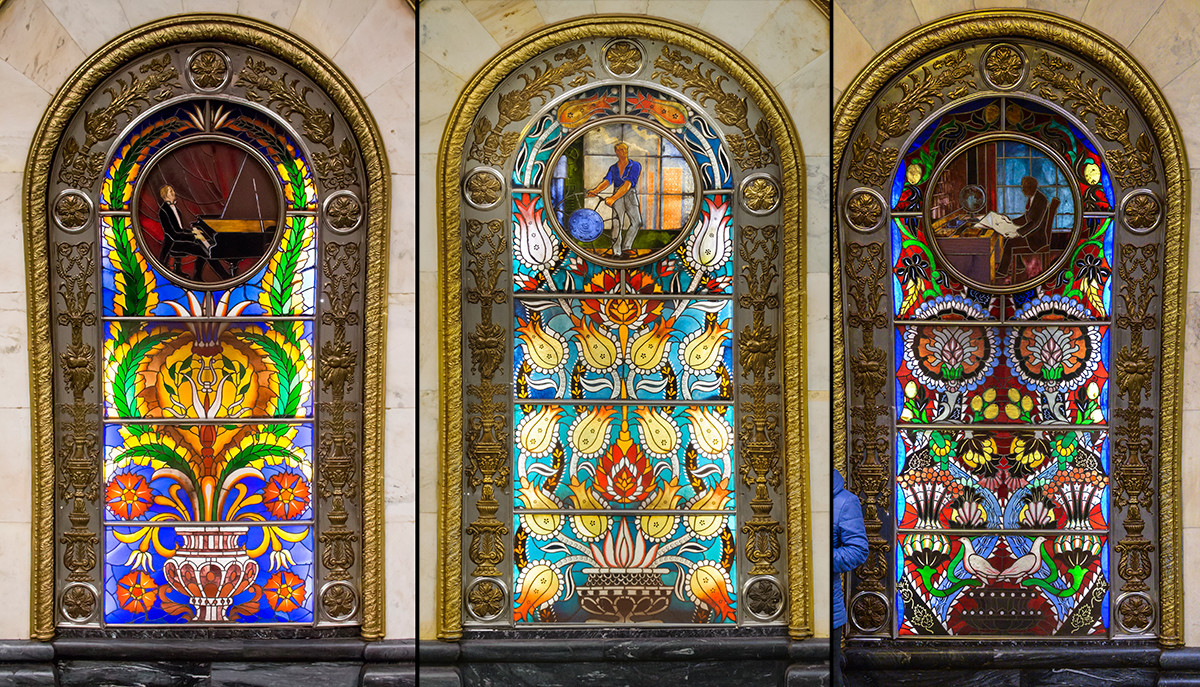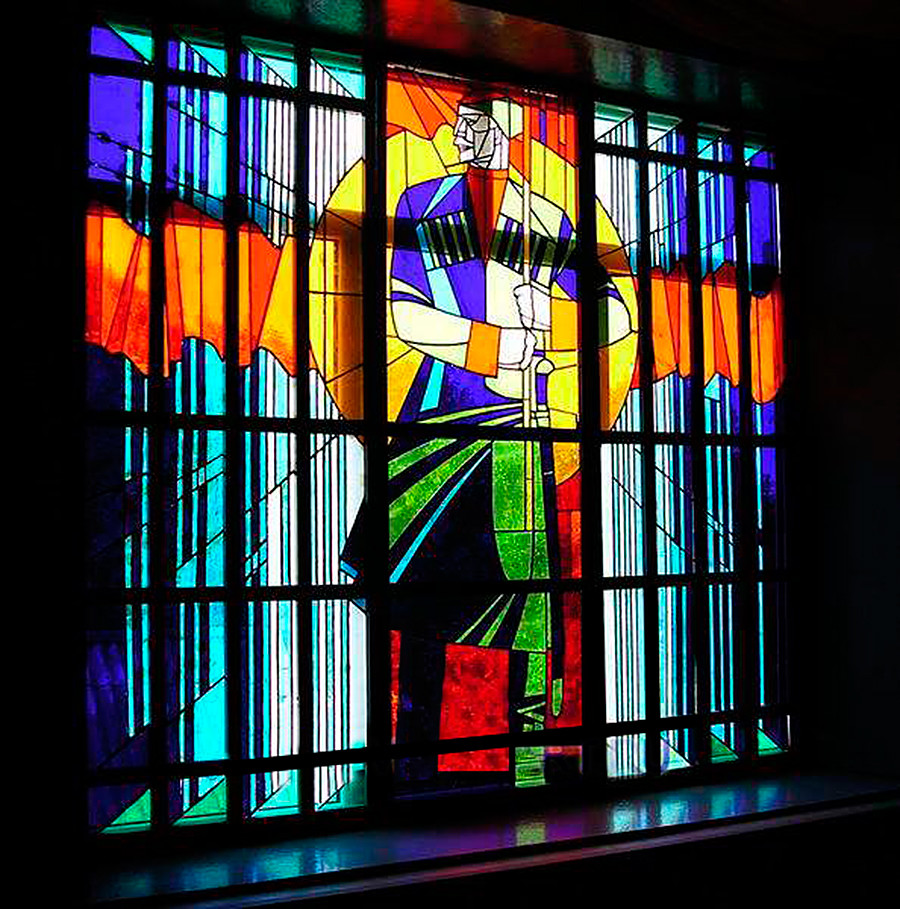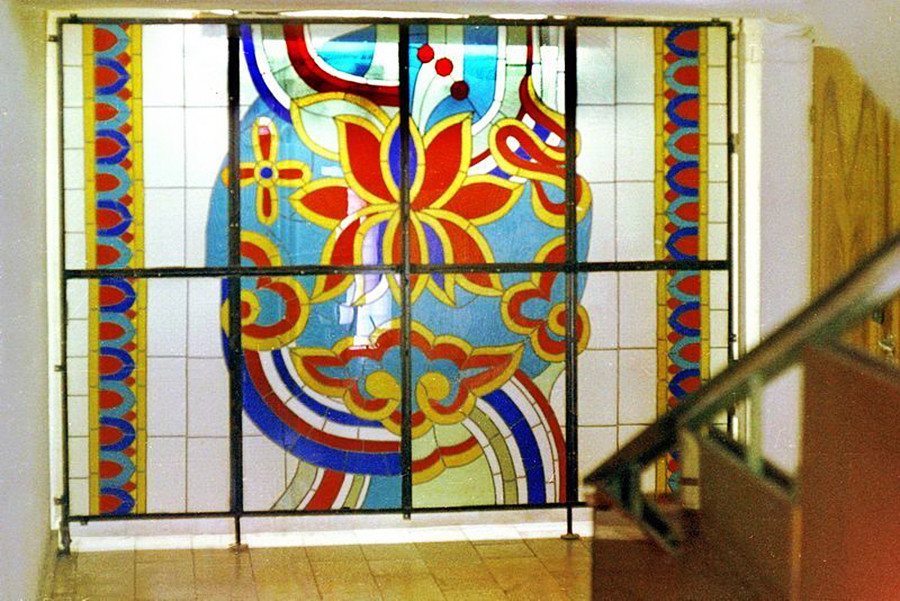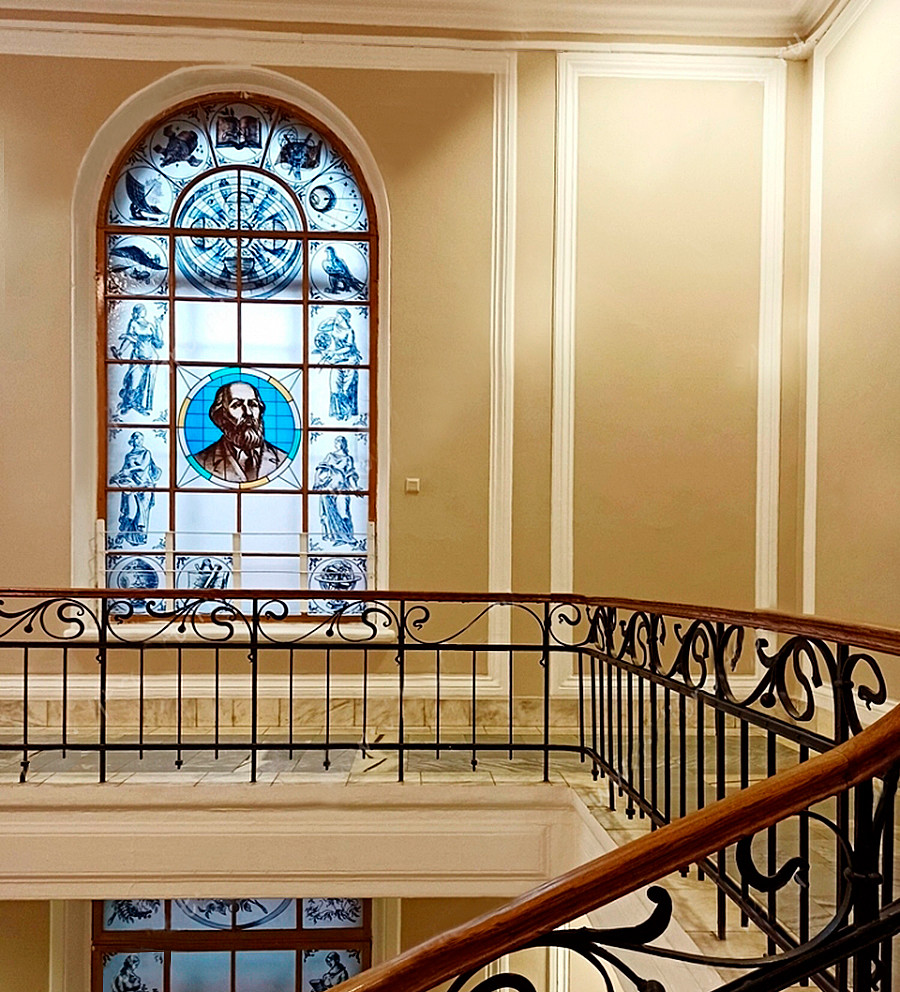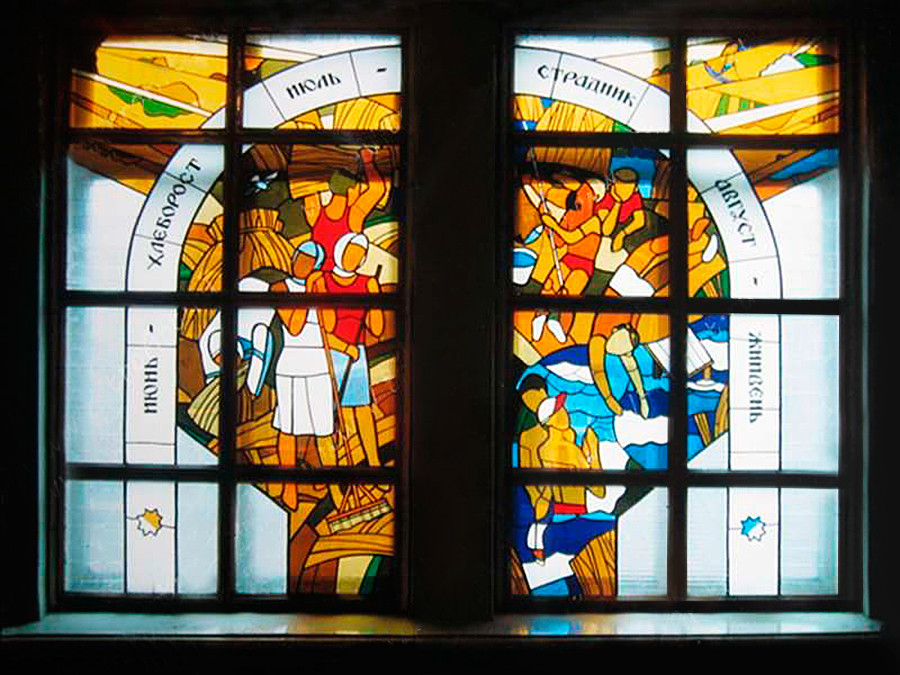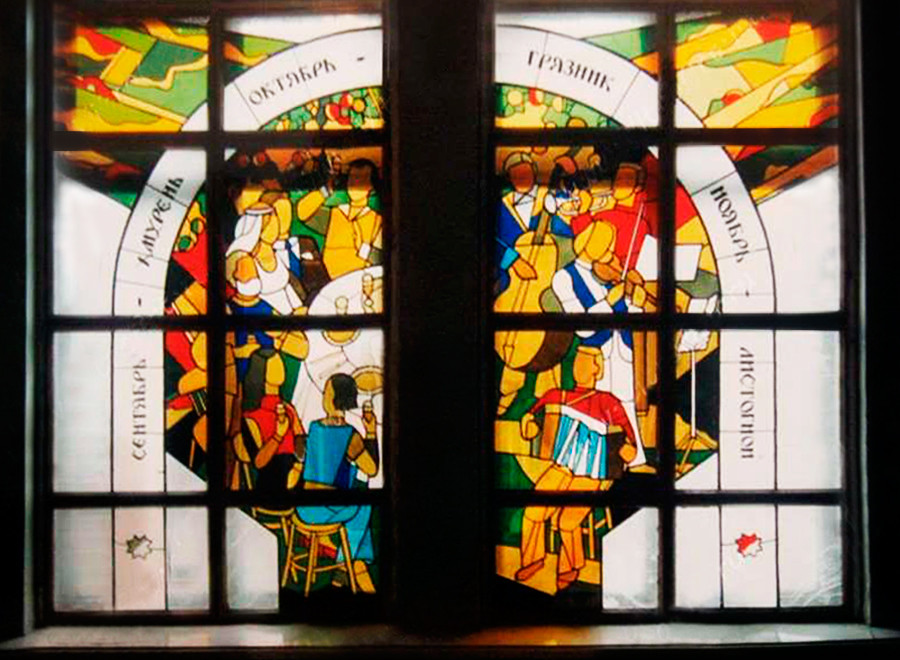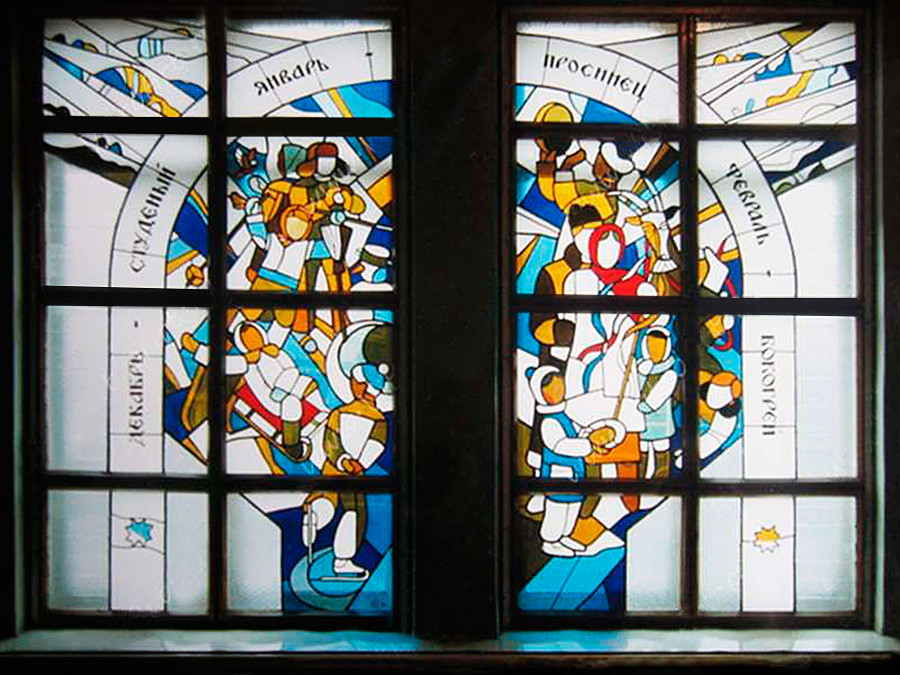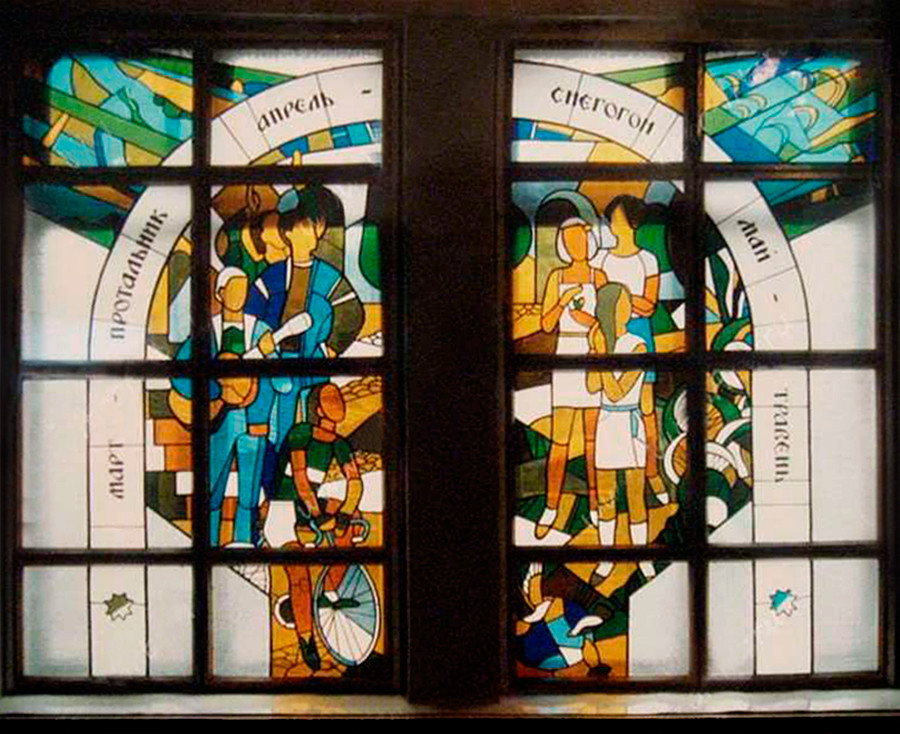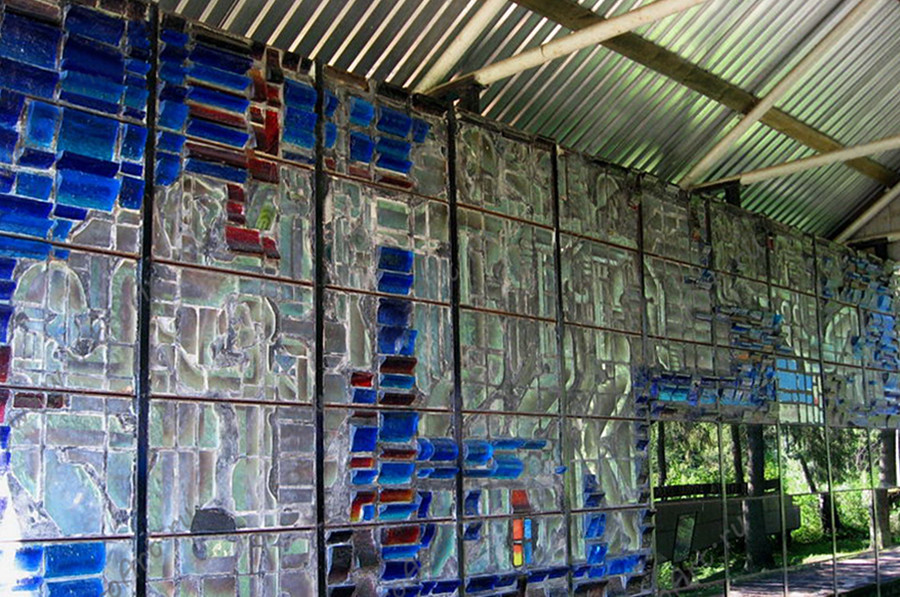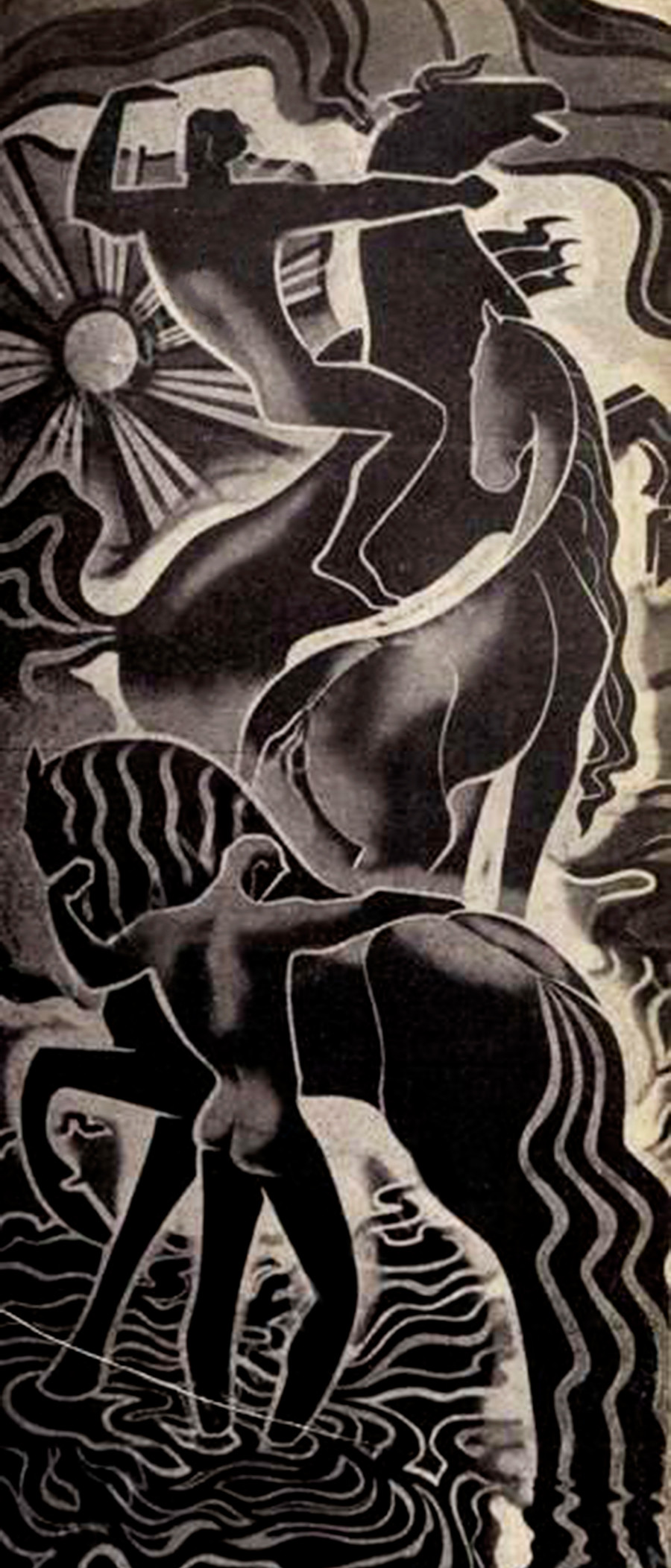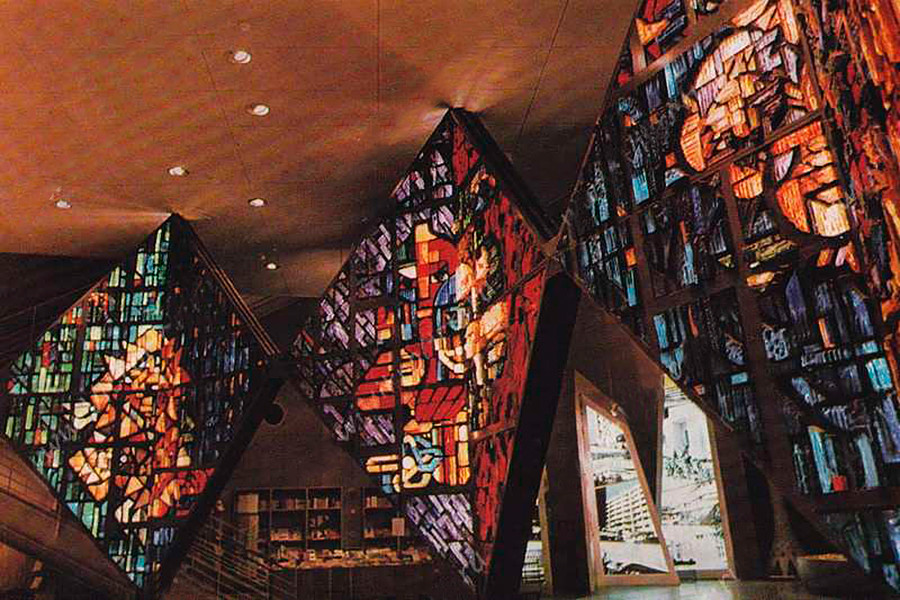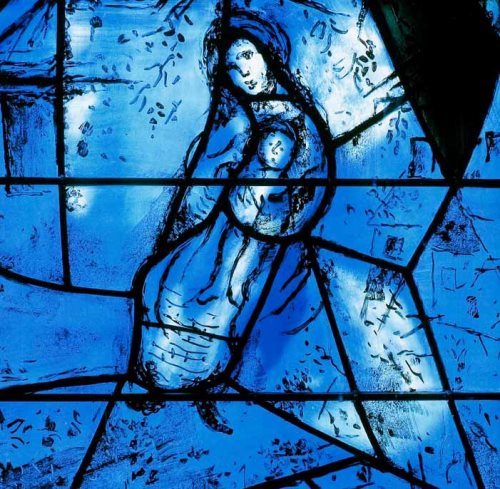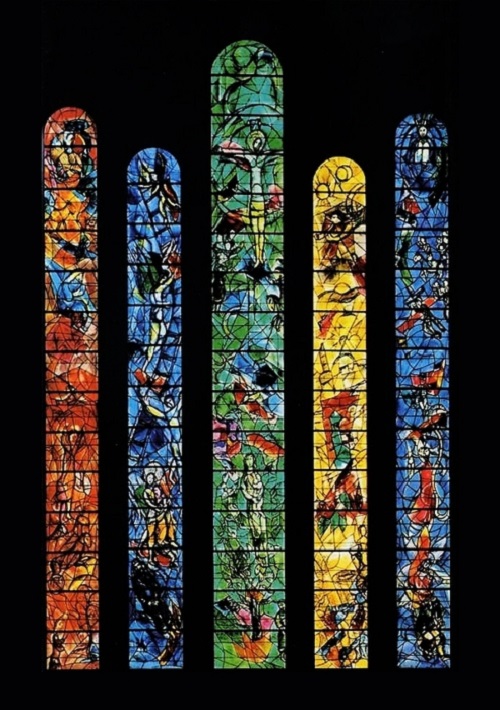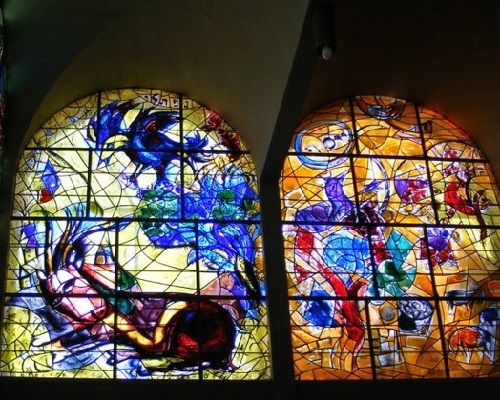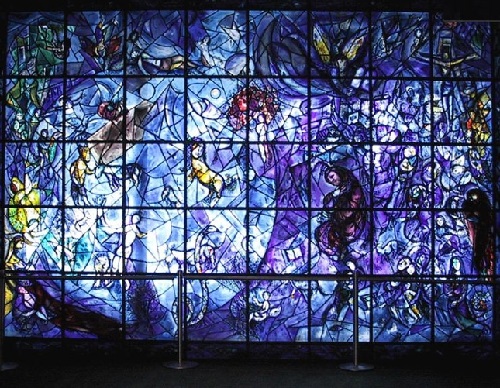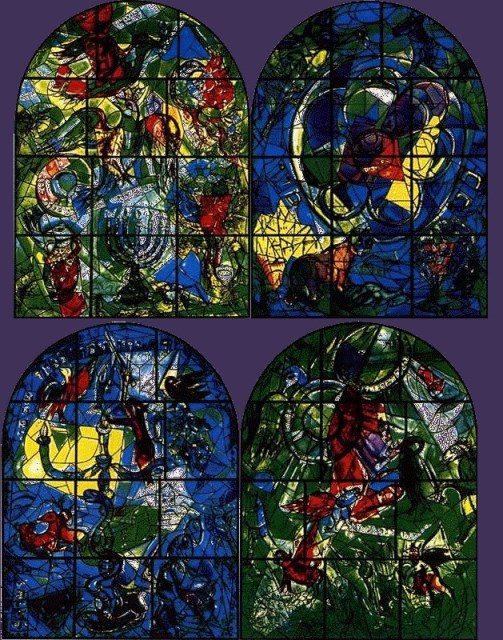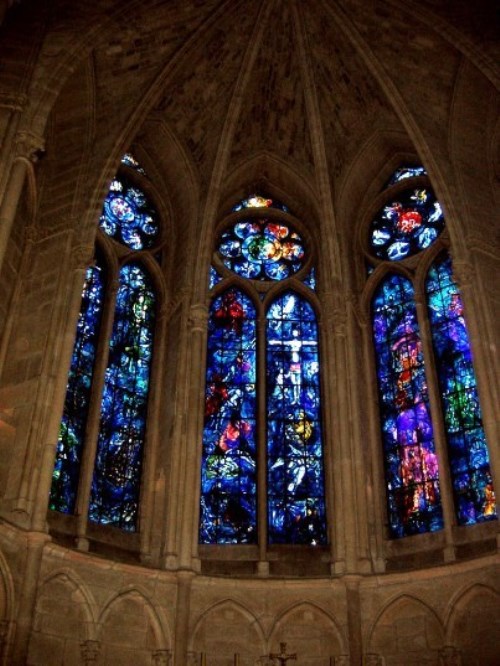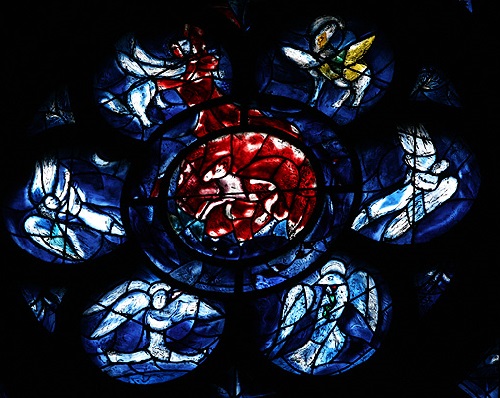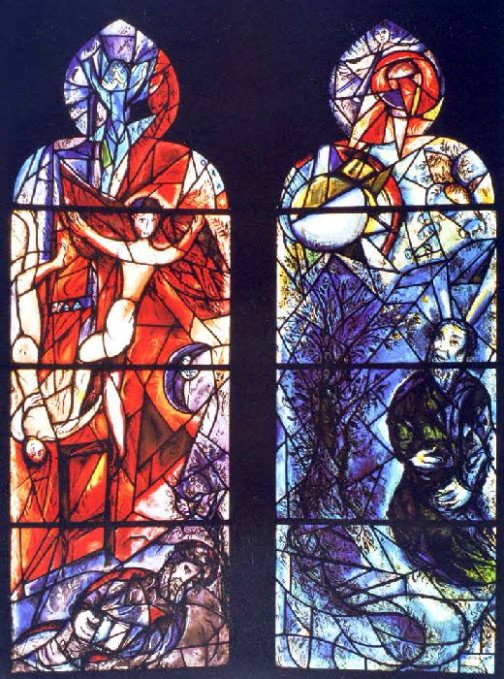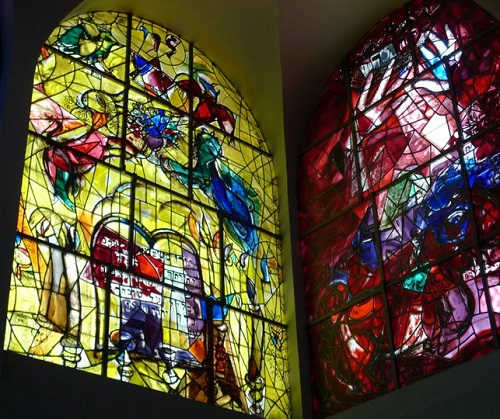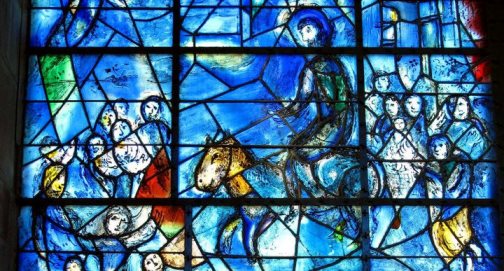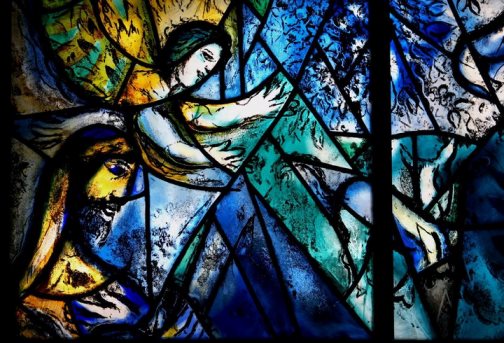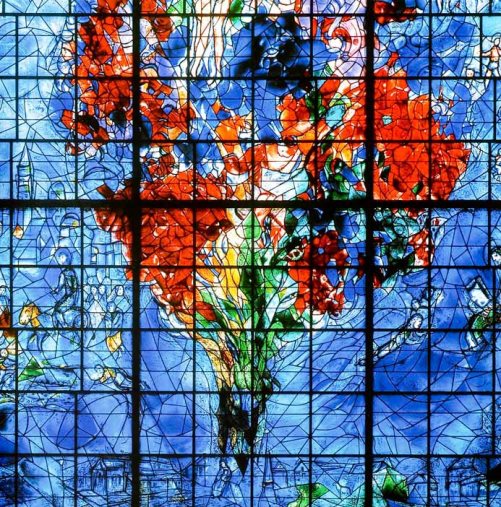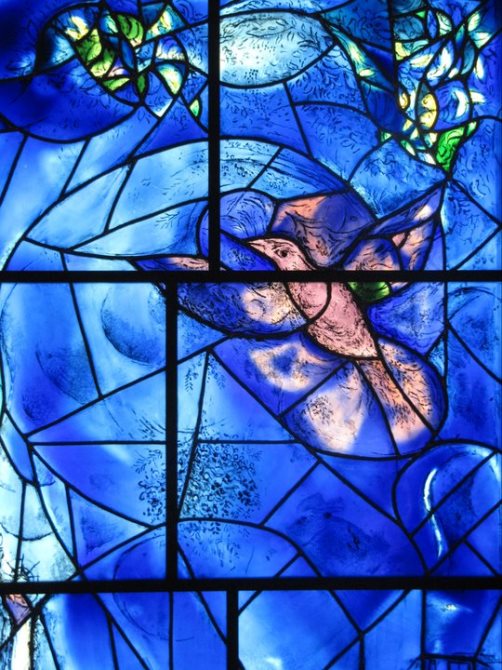- The many faces of Soviet stained-glass windows (PHOTOS)
- “Peace to the people! Power to the Soviets! Land to the peasants!”
- Leader of the Revolution
- Stained-glass windows of the Moscow metro
- Stained-glass windows from the Temryuk Museum of Local Lore
- Stained-glass windows at a garment factory in Novocherkassk
- Stained-glass windows of St Petersburg Polytechnic University
- The «Four Seasons» series
- Meeting of the heroes
- Morning
- «Soviet Youth»
- Stained glass windows admire
- Marc Chagall Stained-glass windows
- Marc Chagall Stained-glass windows
The many faces of Soviet stained-glass windows (PHOTOS)
Legion Media; Nikolai Galkin/TASS
It was only in the late 19th century that stained-glass windows became a popular architectural feature in Russia. Multicolored glass ornaments perfectly matched the aesthetics of the new Russian style, later becoming part of Art Nouveau. «Patterned windows» (as stained glass was called until the 1900s) were made by the best glass workshops, which numbered around 20.
After the Revolution, production was nationalized and glass items became available to everyone. In the 1930s, interest in stained glass returned, and, alongside mosaics, it became one of the most eye-catching forms of art propaganda.
“Peace to the people! Power to the Soviets! Land to the peasants!”
The State Museum of Political History of Russia
The picture shows a postcard with a reproduction of stained-glass windows from the State Museum of Political History of Russia in St Petersburg, made in the 1950s by monumental artist Alexander Korolev.
Leader of the Revolution
Another stained-glass window by Korolev from the State Museum of Political History of Russia.
Stained-glass windows of the Moscow metro
Legion Media; Nikolai Galkin/TASS
There are 32 stained-glass windows at Novoslobodskaya station in the Moscow metro. Based on sketches by Soviet artist Pavel Korin, they were created by master craftsmen from Riga using stained glass taken from Catholic cathedrals in Latvia.
Stained-glass windows from the Temryuk Museum of Local Lore
The Museum of Local Lore in the city of Temryuk, Krasnodar Territory, was founded in the 1920s. Most of the collection is dedicated to World War II, which directly impacted the city.
The stained-glass windows depict a Red Army soldier and a horseman in the national dress of the Caucasus.
Stained-glass windows at a garment factory in Novocherkassk
A whole series of stained-glass windows, each sized 4 square meters, was produced at a garment factory in 1984 by monumental artist Sergei Apryshko.
Stained-glass windows of St Petersburg Polytechnic University
A series of science-themed stained-glass windows, created in the 1980s-90s by artist Boris Beschastny, adorns St Petersburg Polytechnic University.
The «Four Seasons» series
The «Four Seasons» series of stained-glass windows inside an artistically refurbished locomotive plant was made in 1991 by Yuri and Larisa Utenkov.
Summer
Autumn
Winter
Spring
Meeting of the heroes
Lithuanian artist Kazys Morkūnas was awarded the Lithuanian SSR State Prize for this work, created in 1972. It used to be held in a Soviet army monument in the Lithuanian city of Kryžkalnis; however, the memorial was then demolished and the stained-glass window was «exiled» to the private Soviet-era Grūtas park in Lithuania.
Morning
And this stained-glass window, made from mirrored glass, was created by Lithuanian artist Morkunas for the Moscow central pharmacy in 1960.
«Soviet Youth»
This monumental composition, again by Morkunas, adorned the Russian stand at the Expo-70 international exhibition in Osaka, Japan.
If using any of Russia Beyond’s content, partly or in full, always provide an active hyperlink to the original material.
to our newsletter!
Get the week’s best stories straight to your inbox
Stained glass windows admire
Stained-glass windows have been admired for their utility and beauty since ancient Rome, when pieces of coloured glass were assembled into patterned window frames. In Europe, the art of stained glass reached its height between 1150 and 1500, when magnificent windows were created for great cathedrals. Techniques of stained glass window construction were described by the monk Theophilus who wrote a how to for craftsmen about 1100 AD.
As a material the term «stained glass» generally refers to glass that has been coloured by adding metallic salts during its manufacture. Painted details and yellow stain are often used to enhance the design. The term is also applied to windows in which all the colours have been painted onto the glass and then annealed in a furnace.
Stained glass, as an art and a craft, requires the artistic skill to conceive the design, and the engineering skills necessary to assemble the decorative piece, traditionally a window, so that it is capable of supporting its own weight and surviving the elements.
Although usually set into windows, the purpose of stained glass is not to allow those within a building to see out or even primarily to admit light but rather to control it. For this reason stained glass windows have been described as ‘illuminated wall decorations’.
The design of a window may be non-figurative or figurative. It may incorporate narratives drawn from the Bible, history or literature, or represent saints or patrons. It may have symbolic motifs, in particular armorial.
Marc Chagall Stained-glass windows
Painted by Marc Chagall Stained-glass windows
Marc Chagall stained-glass windows
Great artist, Marc Chagall lived for nearly one hundred years, 80 of which he had spent creating a fantastic world full of biblical legends, people and things around him. It is a story interspersed with reality, past and present. Chagall charmed all with his beautiful poetic works, soft and fabulous images. Since the late 1950s, Chagall has made a lot of stained-glass windows for Catholic churches, Lutheran churches, synagogues and other public buildings in France, Italy, USA, Israel, Switzerland and the United Kingdom.
The church choir of St. Stephen, Germany. Chagall conceived stained glass windows as a symbol of reconciliation between the German and Jewish peoples
The original stained glass windows, the works of Marc Chagall, are perhaps the most impressive part of the cathedral in Zurich Fraumuenster .. Five windows, the size of a meter wide and ten in length, strike with their radiant color – a bright, saturated, not customary for the eyes, it seems unearthly. As always, it is Chagall’s recognizable colors – deep blue, ruby red, emerald green, red. If you look at the spiral, you can read the history of Christianity, from the Old to the New Testament, from the window of the Prophet, further – window of the Law, then Jacob and Zion, the composition is finished with the window of Jesus.
Usually, Chagall finished work on the windows in person, often working for several months in the studio of Reims.
Painted in Synagogue windows
One of the most famous works by Chagall in Israel are the stained glass windows in the synagogue of the Hadassah hospital in Jerusalem suburb of Ein Karem. The synagogue is visited not only by believers, patients, but also by ordinary people who want to see one of the timeless works of the great masters.
Marc Chagall Stained-glass windows in Synagogue
Sketches for stained-glass windows were Chagall’s paintings. Glass was performed manually at a specialized factory in La Vereri de Saint-Jus-sur-Loire, in accordance with the instructions of Chagall on color. For the manufacture of colored glass used acid and a double layer of paint, and thus was achieved the subtle color shades and gradations. This gave to the stained glass windows by Chagall unique identity and liveliness.
Synagogue stained glass windows
Synagogue. Marc Chagall Stained-glass windows
Located in the Judean hills west of Jerusalem synagogue was built in the shape of a rectangle. For its coverage (both physical and spiritual) were made 12 windows filled with stained glass. Each of the stained glass featured one of the four primary colors – blue, red, green and yellow with different shades.
Chagall imagined synagogue as the “crown” crowning “Jewish kingdom,” the window – like precious stones translucent flame
Chagall created his own world, where intricately entwined biblical legends, fairy tales and characters of everyday objects, seen by the artist in a new dimension. And in this dimension there is a sustainable balance of the two worlds, created by Chagall – the real and the imaginary, with a balance of color contrasts, exciting consciousness, shifting logic and visual representations.
Marc Chagall Stained-glass windows
The church choir of St. Stephen, Germany. Chagall conceived stained glass windows as a symbol of reconciliation between the German and Jewish peoples
Cathedral of Saint Etienne in Metz, capital of Lorraine. Stained glass windows by Marc Chagall
A gift of Chagall to the United Nations – dedicated to the memory of Dag Hammarskjold, who held the post of UN General Secretary- from 1953 to 1961 and who died in a plane crash during a routine mission of peace
The set of stained glass in a modest church Pocantico Hills, lost in a peaceful province aside from the big cities. USA
The main stained glass window of the Cathedral of Reims. France
Chagall stained-glass windows
Windows by Marc Chagall
Stained-glass windows by Marc Chagall
Marc Chagall’s Stained-glass windows
Stained-glass windows by Marc Chagall
Stained-glass windows by Marc Chagall
Stained-glass windows by Marc Chagall
Stained-glass windows by Marc Chagall
Stained-glass windows by Marc Chagall
Stained-glass windows by Marc Chagall
Stained-glass windows by Marc Chagall
One of the most famous works by Chagall in Israel are the stained glass windows in the synagogue of the Hadassah hospital in Jerusalem suburb of Ein Karem
Sketches for stained-glass windows were Chagall’s paintings
